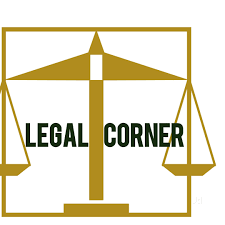I’ve done my share of stupid things.
That’s one of the reasons I’m so passionate about helping people. I want them to avoid mistakes and poor decisions that could trip them up as they build wealth for the future. And let’s be honest—there are a lot of ways you can set yourself back five or 10 years with one minute of stupid.
So, let me share a story of one major mistake I made and how you can learn from it. Hopefully, it will serve as a lesson to stay laser-focused on your long-term wealth-building plan.
MY MILLION-DOLLAR MISTAKE
I was newly married. My wife and I were both working and making good money. I decided to risk $2,500 to dabble in some single stocks (bad move, I know) in a company called AOL. Before we knew it, the stock had more than doubled! Of course, our success got to our heads, so we bought more stock—to the tune of $10,000. In one stock. We thought we were winning, so we kept adding one dumb mistake onto another.
That $10,000 grew to $25,000. That was a huge amount for a newly married, young couple. We thought we were sitting on a proverbial gold mine! Even though that money was in a single stock, it was a large piece of our financial picture. Talk about unbalanced!
Rather than get some direction from a financial advisor, I thought I knew enough to manage my investment. I firmly believed that if my stock had grown that much already, it had the potential to go through the roof! What could go wrong?
A lot. A lot could go wrong. Before long, there was a small correction in the market, and my stock took a hit. Rather than cut my losses and run, I decided to double down. (Another bad move, I know.) I doubled my losses instead. In the end, I lost about $25,000 before I got out.
I did the math. If I had invested that $25,000 in a mutual fund with a 10–12% return, that money could have grown to $168,000 in 20 years. If that’s not painful enough, that same $25,000 could have meant $1.1 million by the time I retire.
Listening to my buddy and investing in a single stock cost me $1.1 million.
Even now, that stings a little.
WHAT YOU CAN LEARN FROM MY MISTAKE
The only thing that eases the pain of that loss is knowing that other people can learn from my mistake and avoid rash decisions that could cost them—literally. Here are a few things you can take away from my time in Stupid Land:
- DON’T INVEST IN SINGLE STOCKS.
I can’t emphasize this enough. You’re just asking for trouble. I know you hear news stories of people who invested early in some previously unknown tech company that’s now worth billions. And you think, Why not me?
Listen up, people: The chances of that happening to you are astronomical. Like finding a needle in a field full of haystacks. Basing a large part of your financial future on those odds is stupid. Plain and simple. I can’t be any clearer than that.
- DON’T FALL FOR A GET-RICH-QUICK PLAN.
My buddy convinced me that this was the deal of all deals. He said there was “no way I could lose,” and the early strong returns convinced me he was right. I fell for the myth of quick wealth. It lulled me into a false sense of security, and it took huge losses to shake me out of that slumber. I got impatient and greedy. And I paid the price.
If these overnight success opportunities worked, you’d hear about them every day! But you don’t hear about them—because they don’t work. There’s no such thing as a “sure thing.” Building wealth is a slow process. It takes time and stubborn persistence to stick to a proven plan—balanced investing in mutual funds. It’s not flashy. It won’t make headlines. But it works—if you stick to it and don’t get sidetracked.
- DON’T GIVE UP WHEN YOU MAKE MISTAKES.
When I was looking at an empty bank account after the AOL stock plummeted, I had two choices: I could wallow in self-loathing and regret, or I could pick myself up, learn from the experience, and get back on track. You have the same choices.
Notice that I said when—not if—you make mistakes? That’s because you will make mistakes. Hopefully, they’ll be minor ones. But when those happen, you can stay where you are—or you can move forward. And I guarantee that you won’t ever build wealth by reliving your past mistakes.
- GET ADVICE FROM THE EXPERTS.
One of the reasons I lost so much money is because I didn’t get the help of people who knew more about investing than I did. I thought I could handle it. My young pride didn’t think I needed help. If I had talked to someone—and if I had listened to their wisdom—I might be $1.1 million richer in retirement.
I can’t dwell on my past, but I can choose differently in the future. That’s why I meet with a financial advisor regularly. These people know to invest inside and out. That’s the world they live in. An advisor can keep you away from risky decisions and steer you in the direction of wiser ones (if you’re willing to listen). They can rebalance your portfolio, suggest changes in your investments, and explain tax implications you might face.
Everyone makes mistakes, but some mistakes can be avoided. No matter how much you have in the bank, you need to stay focused. Keep your eye on your goals. Don’t let anyone or anything distract you from your financial goals. Your future is too important to lose sight of the finish line.
If you want to learn from others who have built wealth the right way, get my book, Everyday Millionaires: How Ordinary People Built Extraordinary Wealth—And How You Can Too. We surveyed over 10,000 millionaires to discover the habits and practices that helped them hit seven figures in net worth. Their answers might surprise you!
Written by Chris Hogan from Chrishogan360.com





